Mars
Latest
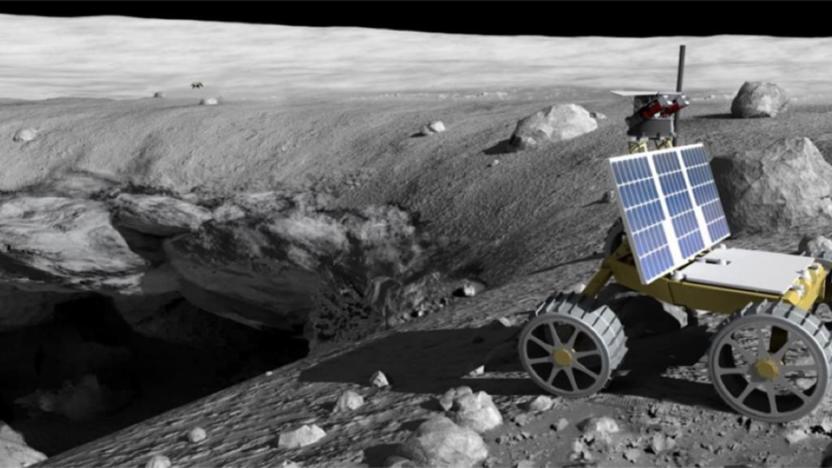
NASA advances lunar crater modeling and asteroid mining projects
NASA doesn't just want to return to the moon by 2024, it also wants to establish a "sustained human presence" and to use the moon as a hub for future Mars exploration. In order to do that, it will need new ideas and technologies, like those solicited and supported by the NASA Innovative Advanced Concepts (NIAC) program. Today, NIAC moved two projects to Phase III, the furthest any concepts have made it.

NASA wants you to get your boarding pass to Mars
You probably won't visit Mars for a long time, if ever. You might have a way to go in spirit, though. NASA has introduced a "Send Your Name" campaign that will put your name on the Mars 2020 rover, leaving a long-term record of your name on the Red Planet. It won't be easy to read -- JPL is using an electron beam to etch over a million names on a dime-sized chip -- but you will get a "boarding pass" to prove that your name is Mars-bound.

Dust storms may have stolen all of Mars' water
In May 2018, Opportunity had been doing science on Mars since 2004, and there was no reason to think that the plucky rover wouldn't carry on. Then, a dust storm hit that completely obscured the planet from view. After fine dust coated Opportunity's solar panels, the rover apparently lost power and was declared dead by NASA in February 2019. Now, scientists think similar storms may have also delivered a coup de grace to water on Mars, stripping it from its surface for good.
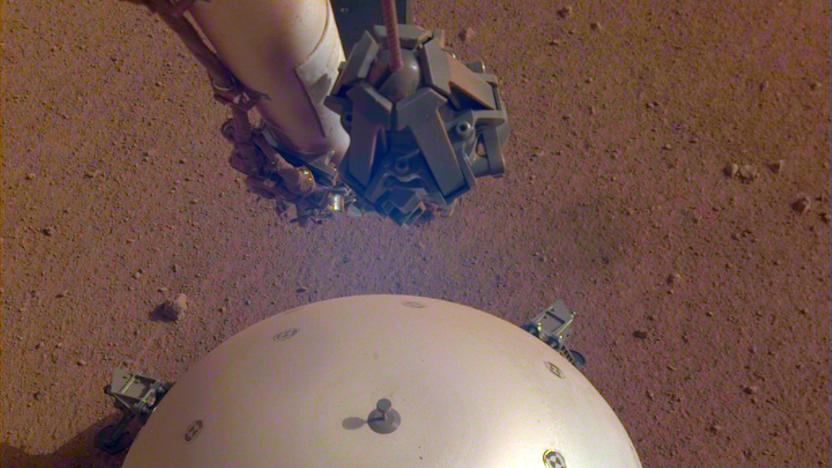
NASA's InSight lander may have recorded a marsquake
It might not have taken long for NASA's InSight lander to capture a marsquake. The machine's seismometer recorded trembling on April 6th that seems to have come from within Mars, rather than an above-ground source like the wind or InSight itself. Although the event was too quiet to say much about Mars' insides (it would have been difficult to detect on Earth), it suggested that Mars is, in fact seismically active. There were other events on March 14th, April 10th and April 11th, although they were faint enough as to have been ambiguous.
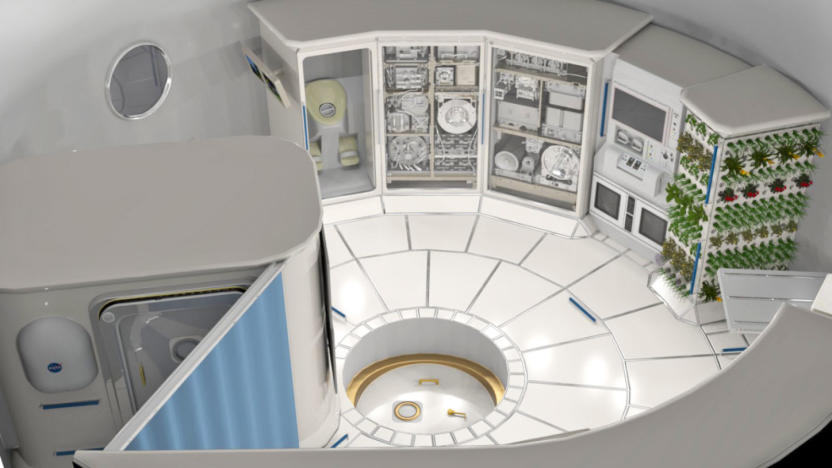
NASA enlists academia to develop autonomous space habitats
As NASA faces pressure to get astronauts to the Moon and considers human exploration of Mars, it will need to sort out a few major details -- like how to keep extraterrestrial habitats functioning even when there aren't any human occupants. To do this, NASA selected two new, university-led Space Technology Research Institutes (STRIs) and tasked them with developing automated Smart Habitats, or SmartHabs.
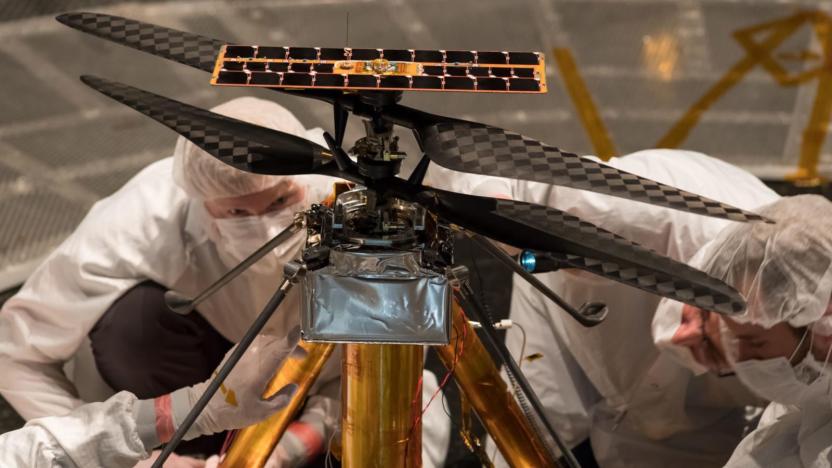
NASA proves its space helicopter can fly on Mars
The scientists working on NASA's Mars helicopter project are done building the actual 4-pound vehicle that's blasting off to the red planet with the Mars 2020 rover. But they can't just strap the helicopter to its bigger companion's belly and call it a day -- they first have to prove that it can actually fly in Martian conditions. That's why in late January, the team replicated our neighboring planet's much thinner atmosphere in JPL's Space Simulator in order to make sure the helicopter will be able to take off. Spoiler alert: they were able to successfully conduct two test flights in Martian conditions on separate days.

'Moons of Madness' blends Lovecraft with 'Dead Space'
There aren't many great H.P. Lovecraft-inspired games, let alone ones that venture outside of Lovecraft's time period, but Rock Pocket Games and Funcom think can do both at once. They've announced Moons of Madness, a "cosmic horror" game that blends Mars exploration with Lovecraftian supernatural elements and at least a few cues from Dead Space. You assume the role of a technician at a Mars base who grapples with failing systems, a missing EVA team and strange visions, all of which ties into a strange signal emanating from the planet. You're fighting both against very real (and appropriately tentacled) enemies as well as your own possible insanity.

NASA releases the final panorama that Opportunity took on Mars
Before a Martian dust storm took out Opportunity in June 2018, the rover was able to capture hundreds of images that NASA has now released as a panorama. The 360-degree photo is composed of 354 images overall, taken by the rover's Panoramic Camera (Pancam) from May 13th through June 10th. It shows the vehicle's final resting place in Perseverance Valley located in Endurance Crater's western rim. The rover lost touch with NASA in June after it reported the approaching storm that ultimately covered its solar panels with dust and rocks.

Trump asks for $9.6 billion to bolster cybersecurity in 2020 budget
President Donald Trump has revealed his proposed budget for the 2020 fiscal year, which "supports the creation" of Space Force (USSF) as the sixth branch of the armed forces. The White House also hopes to bolster cybersecurity and NASA exploration missions.

NASA is giving us daily weather reports from Mars
NASA says its new Mars weather website will be "geeky fun for meteorologists." For the rest of us, it's a daily reminder that Mars is ridiculously cold. The website shares a daily weather report with temperature, atmospheric pressure and wind speed collected by InSight lander, the NASA spacecraft currently stationed near the red planet's equator.

NASA backs tiny 3D-printed sensors for planetary rovers
Nanomaterials might just prove the key to the next wave of planetary rovers. NASA has poured $2 million into a Goddard Space Flight Center team developing 3D-printed sensors whose nanomaterials make them tiny, ultra-sensitive and resistant to radiation. The aim is to build a device that can detect minuscule (on the parts-per-billion-level) amounts of life-supporting chemicals like ammonia, hydrogen, methane and water.

NASA admits the Mars Opportunity rover is dead
If you're a fan of Mars exploration, you're probably in mourning right now. NASA's Opportunity rover has effectively been declared dead after the agency's last attempt to contact the storm-struck rover was met with silence. Officials held a press conference at 2PM ET to discuss the outcome, and as expected NASA confirmed that it is saying goodbye to Opportunity. The machine doesn't stand a chance if it doesn't have power -- Martian winter is coming, and Opportunity needs working heaters to survive the chilly conditions.
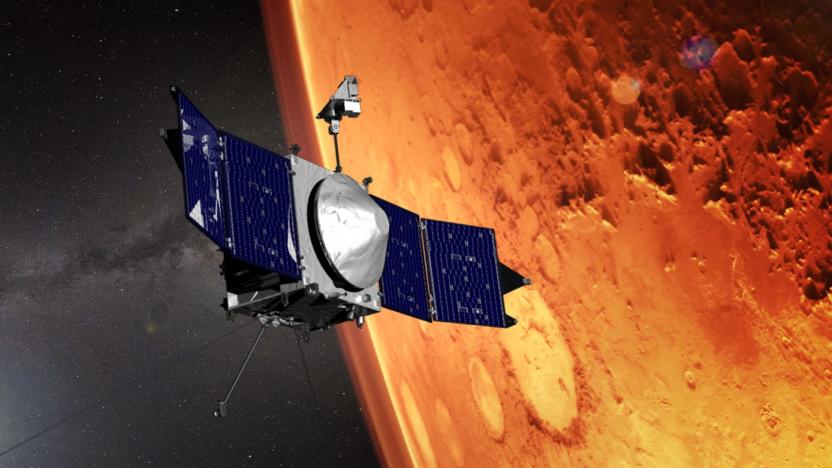
NASA puts a key satellite in place for its Mars 2020 mission
NASA is preparing for the Mars 2020 mission by bringing the MAVEN probe, which will act as its antenna and connection to Earth, closer to the red planet. Over the next few months, the spacecraft will fly closer and closer to Mars until it's only 2,800 miles above the surface, down 1,050 miles from its current orbit. That will boost the probe's communications capabilities: As MAVEN principal investigator Bruce Jakosky explained, "It's like using your cell phone. The closer you are to a cell tower, the stronger your signal."

Mars Express orbiter snaps stunning image of Korolev crater
The European Space Agency has released a gorgeous composite image of Mars' Korolev crater, an 82-kilometer-wide crater situated in the planet's northern lowlands. The ESA's Mars Express orbiter snapped pictures of the crater over the course of five orbits, and five "strips" were combined to make this stunning image. The Korolev crater is filled with 1.8-kilometer-thick ice year round, which is believed to be maintained by an occurrence known as a "cold trap." The air moving across the crater's ice cools down, sinks and then acts as a sort of shield over the ice, keeping it cold and frozen all year long.
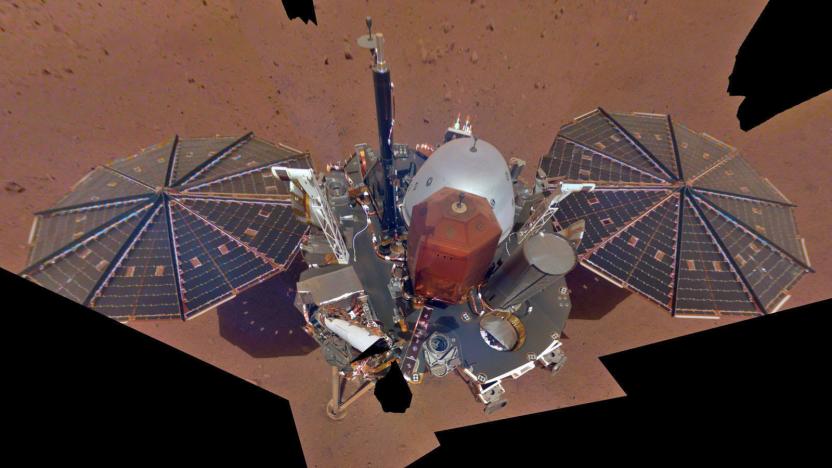
NASA's InSight lander is ready to monitor marsquakes
On December 19th, Mars InSight lander's ground team moved the vehicle's arm as far as it could reach and planted its seismometer 5.367 feet away. Seeing as the lander's main goal is to gather data so we can learn more about the red planet's interior, the team considers that seismometer its most important instrument. The mission's Principal Investigator, Bruce Banerdt, said seismometer deployment is as significant as landing InSight on Mars. "We need it in order to complete about three-quarters of our science objectives," he explained.

NASA's InSight lander proves it's on Mars with a selfie
Next time you can't find the perfect angle for your selfie, just thank the universe you're not NASA's InSight lander. The spacecraft had to take 11 images with a camera attached to its robotic arm and then stitch them together to create its first self-portrait. InSight clearly took a cue from the Curiosity rover, which has years of experience taking composite selfies with the Martian landscape as its background. You can clearly see InSight's solar panels on full display in the photo, which was captured on December 6th, along with some of its science instruments.
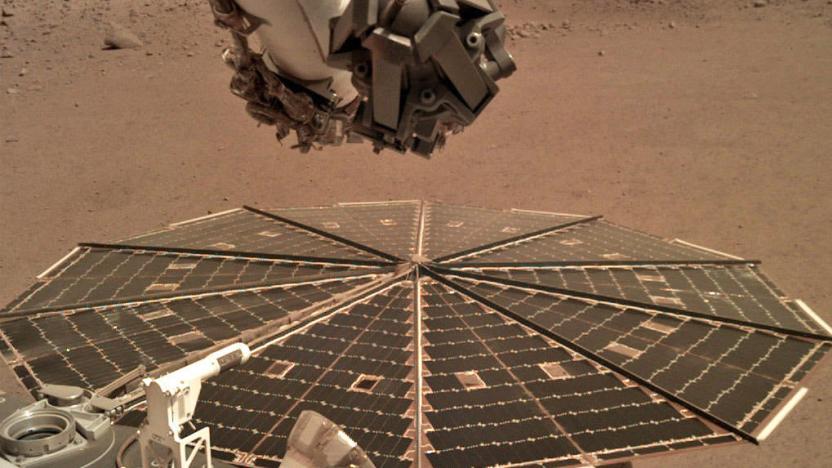
Hear the wind on Mars for the first time, thanks to the InSight lander
Since landing on Mars last week, NASA's InSight lander has been taking pictures of itself and its surroundings as it prepares to unload the scientific instruments it brought along to the planet. But the lander has also picked up something that other Mars missions never have -- audio of the planet's winds. "Capturing this audio was an unplanned treat," Bruce Banerdt, InSight's principal investigator, said in a statement. "But one of the things our mission is dedicated to is measuring motion on Mars, and naturally that includes motion caused by sound waves."
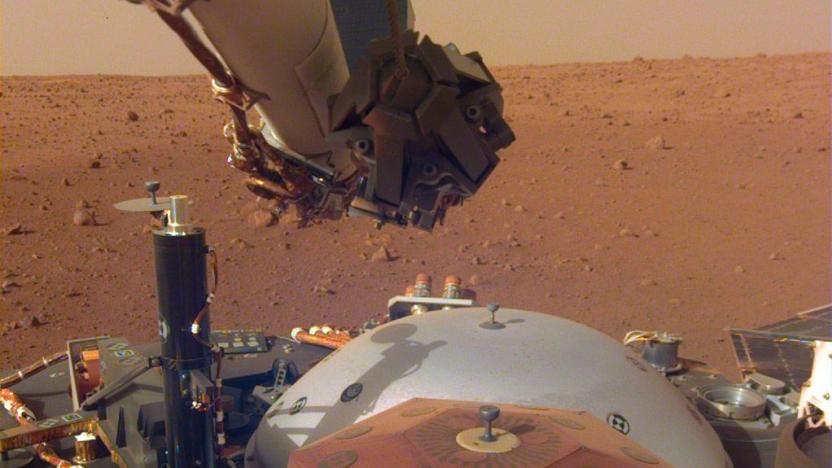
NASA’s InSight lander is ready to get to work
NASA's InSight lander arrived on Mars last week and now it's prepping for the next stage of its mission. The lander is equipped with a nearly six-foot-long arm, which will be used to lift sensitive scientific instruments off of the lander and place them on the Martian surface -- the first time a robot has been used to do so on another planet. Thus, the arm plays a really key role in this next step of the InSight mission, as placement will be crucial for the mission's overall success. But new images from InSight show the lander is up for the challenge, as the arm is working and has already started to collect images of its surroundings, information that scientists will use to determine where InSight's instruments should be placed.
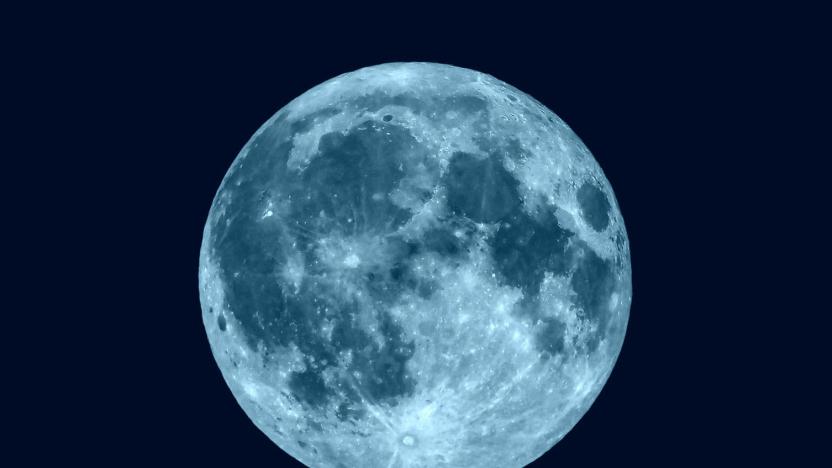
NASA reveals companies that will help it return to the moon
Last year, President Trump signed a directive that tasked NASA with returning to the moon -- an effort that Vice President Pence and NASA Administrator Jim Bridenstine have repeatedly backed. And that goal is set to include commercial companies, which will partner with NASA on moon missions and beyond. "Working with US companies is the next step to achieving long-term scientific study and human exploration of the moon and Mars," the agency has said, and today, Bridenstine announced which companies NASA plans to partner with as it works towards a return to the moon.
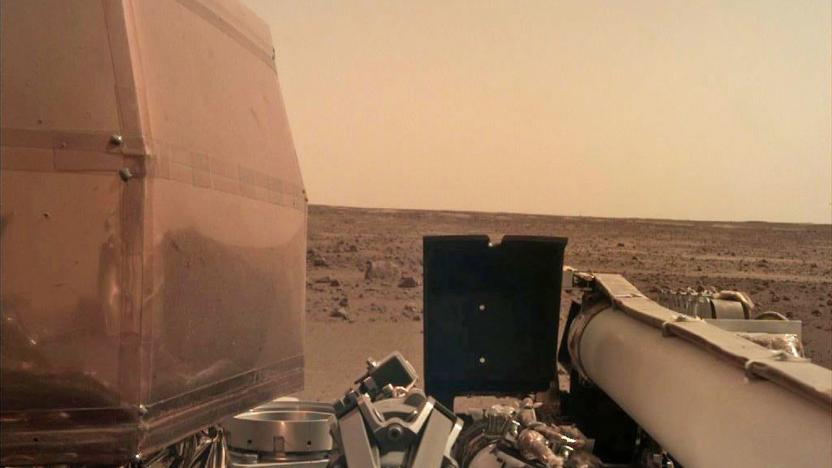
NASA's InSight lander delivers its first clear photo from Mars
Earlier today the InSight lander successfully touched down on Mars, and it's already crushing the 'gram. Signals indicating that its solar panels had opened and were generating power came back to Earth at about 8:30 PM ET, along with a few photographs relayed via another visitor to Mars: the Odyssey orbiter. While it's expected to take two to three months to fully deploy the lander's instruments, this image came from its Instrument Deployment Camera which is mounted on a robotic arm.






